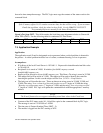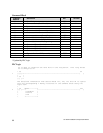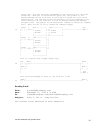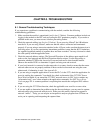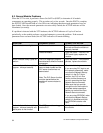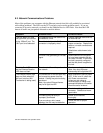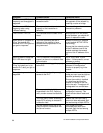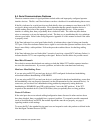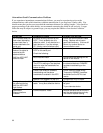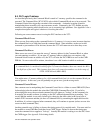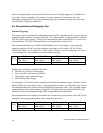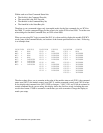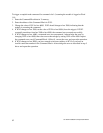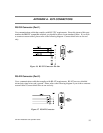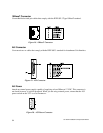CTI 2572 Installation and Operation Guide
87
8.4. Serial Communications Problems
The most common sources of signal problems are bad cables and improperly configured operator
interface devices. The R
CV and XMT indicators can be a valuable aid in troubleshooting these errors.
If the R
CV indicator for a serial port does not flash briefly when you attempt to send data to the 2572,
no signal is being received by the module. First, determine that the operator interface device is
indeed sending data (refer to the operating manual for the applicable device). If the operator
interface is sending data, then you probably have a defective cable. The cable may have broken
wires or connectors or it may be improperly wired. The best way to troubleshoot this is to substitute
a known good cable. Refer to the wiring diagram in Appendix A of this manual to check if the cable
is properly wired.
If the X
MT indicator for a serial port flashes briefly, it indicates that a signal is being sent from the
2572 port. If the X
MT indicator flashes but no signal is received at the operator interface device, then
there is most likely a cable problem. Follow the procedure outlined above for checking cabling
problems.
If the XMT indicator does not flash within 2 seconds of receiving a signal (RCV indicator flashes), it
indicates that the 2572 is not responding to the signal. Refer to sections below for possible causes.
Baud Rate Mismatch
First, check to ensure that the baud rate settings on both the Model 2572 and the operator interface
are set to the same data rate. If you note a problem, set both to the same baud rates and retry.
Hardware Handshaking Error
If you are using an RS-232 port and your device is NOT configured for hardware handshaking,
ensure that hardware handshaking is DISABLED.
If you are using an RS-232 port and your device is configured for hardware handshaking, ensure that
the handshaking wires are properly connected (see the documentation for the connected device). In
some cases you can check out a handshake wiring problem by temporarily setting hardware
handshaking to DISABLED (port DIP switch position 3 set to the OFF position). If the 2572
responds to the attached device (X
MT LED flashes), then you probably have a wiring problem.
Protocol Problems
If the serial port does not work and cabling/configuration items discussed in other sections above
have been checked, then you probably have a protocol problem. To respond to module commands
(such as Serial Redirect) and NITP, the module dipswitches must be set properly, see page 9
regarding module switch settings.
To access the PLC, the attached device must issue and respond to task code packets as defined in the
Non-Intelligent Terminal Protocol (NITP) .



